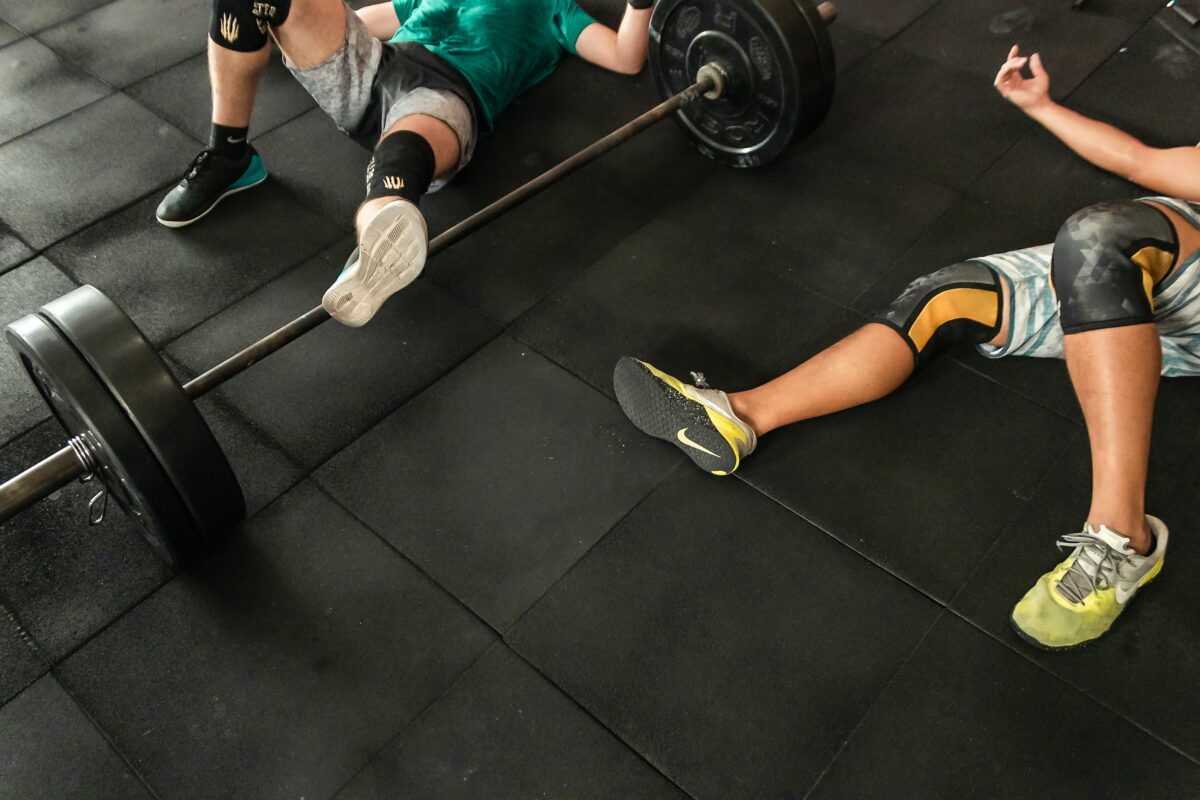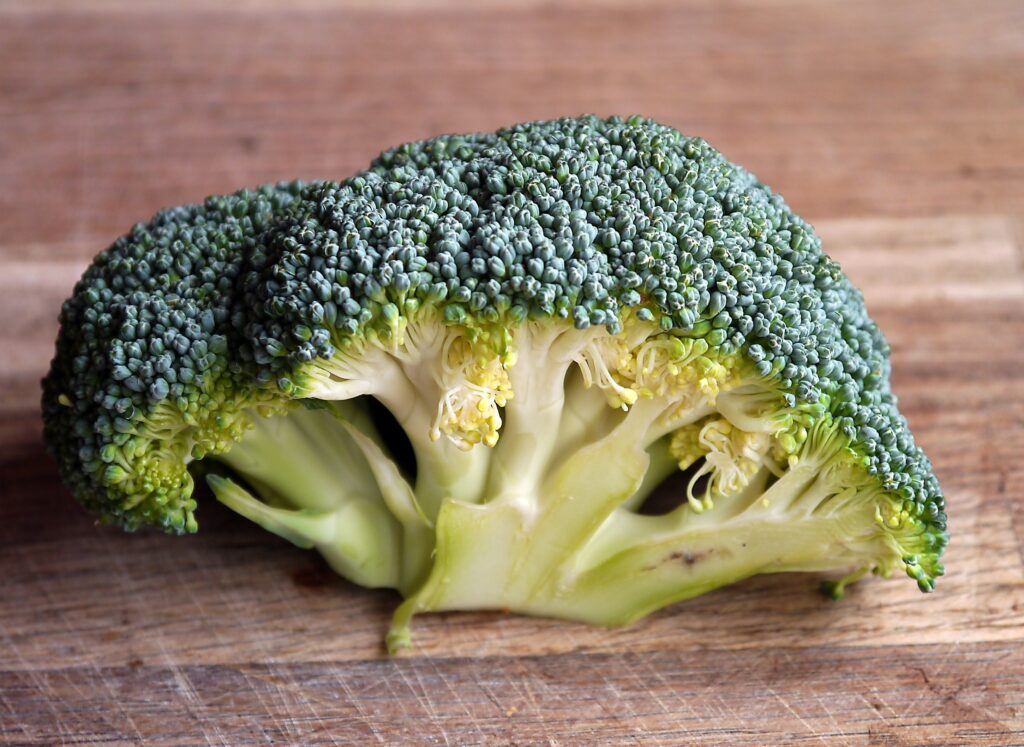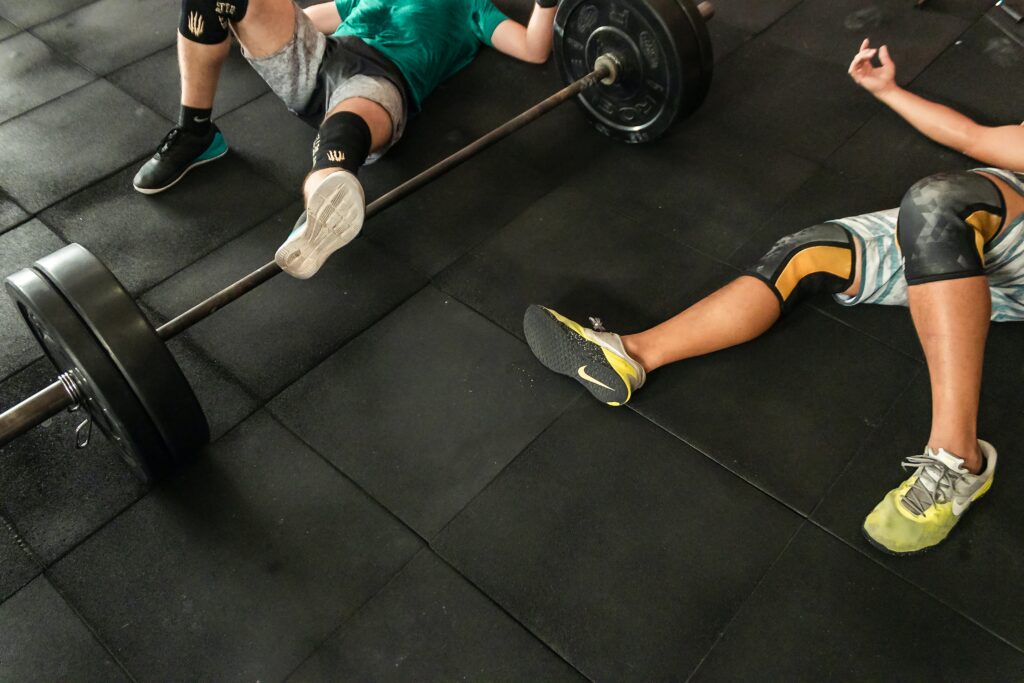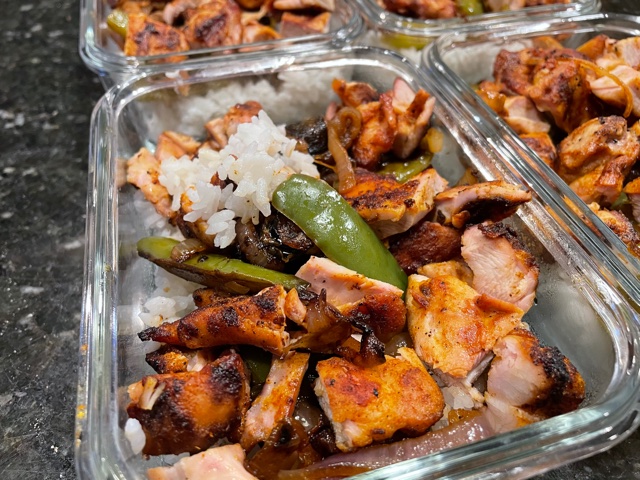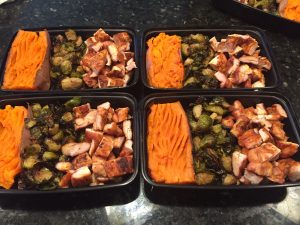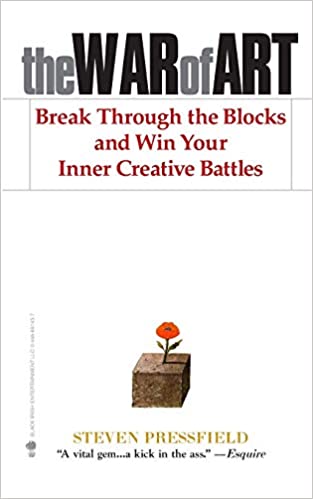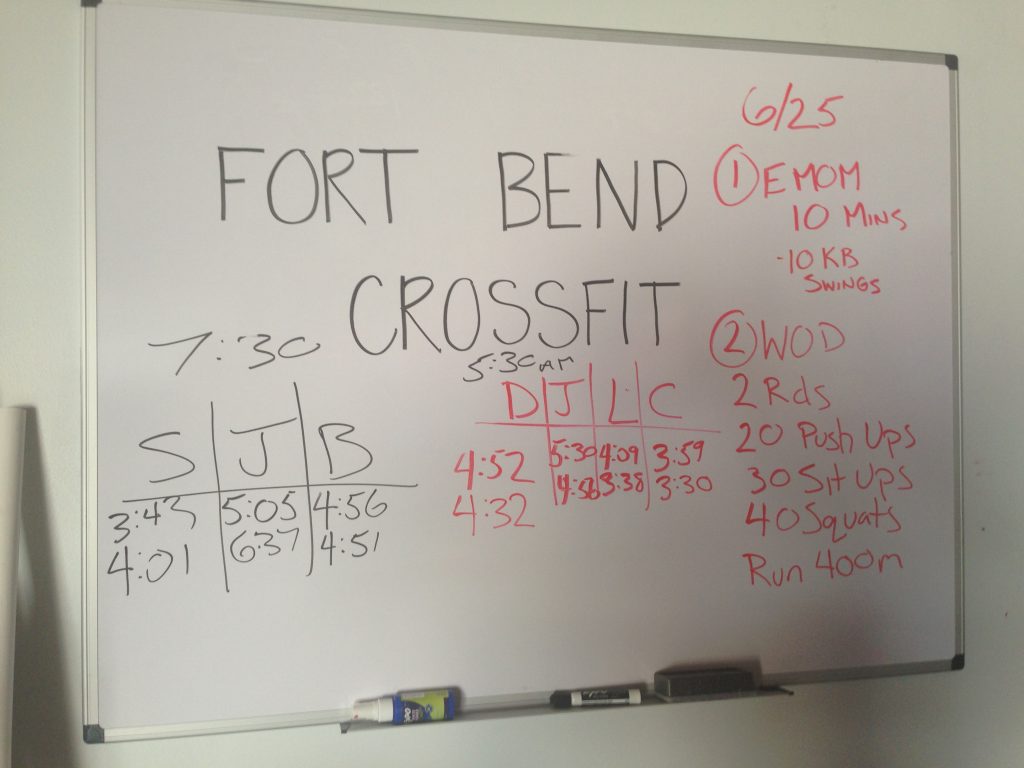You should track your workouts. But I get it. Who wants more stuff to track? We live in a day and age where we can track everything. Finances, weight, food intake, steps, sleep, whatever. Want to track the health of your lawn? I’m sure there’s an app for that too.
But workouts? They’re already painful enough. Who would want to transcribe them too?
When I first started working out, I didn’t think much of tracking my workouts. I was young and impatient and just wanted to “get jacked!” This served me well in some aspects, like not waiting to craft the “perfect’ workout plan before starting. I just started. But in other areas, like tracking my workouts, a little forethought could have proved valuable.
I don’t remember when or why I finally decided to track my workouts, but eventually I did. And I’ve been doing so in some fashion for over 20 years now.

I’ve tried all sorts of ways to track my workouts. From notebooks, to excel spreadsheets, to word documents, to apps. Like many things, I’ve learned that there’s “more than one way to skin a cat” when it comes to how to track your workouts.
But if you’re like I was, before learning how to track your workouts you’d probably like to know why you should track your workouts.
Back to my original question. Why would you bother to track your workouts?
Why You Should Track Your Workouts
1. To Ensure You’re Making Progress
Whether you’re using the progressive overload training principle, or training for a race, or preparing for a grueling event like a Spartan Race or even some form of military school, if you’re not tracking where you’ve been, where you currently are, and where you’d like to be then there’s no way to make sure you’re making progress.
And if you’re putting in all that work, chances are you are wanting that work to have a payoff. Whether it’s to get stronger, look better, or feel better, whatever your goal is you want to be sure you’re progressing towards that goal.
Let’s take the progressive overload training principle. To grossly oversimplify, this is a training system where each training session you look to lift a little bit more weight in an effort to get stronger.
Lift weights to stress your muscles, they adapt by getting stronger, then lift more weight to further stress your muscles thus creating a new adaptation and getting even stronger. Rinse and repeat.
In this system, each training session builds off of the previous training sessions. If you don’t track what you’ve done, you’ll have no way of knowing what you need to be doing next to get stronger. You may end up just doing a whole bunch of work without ever getting stronger or more muscular.

If you’re not tracking, you’re just spinning your wheels.
Wasted work? No thanks!
While I’ve never trained for a race like a marathon, I imagine it’d be just as important to track your running times during training to ensure you’re getting faster.
If you’re not getting stronger while on a progressive overload program or not getting faster on a running program then what’s really the point of the training program in the first place?
You’d literally just be spinning your wheels!
You’d be exercising and not training. Exercise is just doing work. Training is doing work with purpose. Purpose like getting stronger, more muscular, faster, etc.
If you’re going to be pushing yourself, sweating, and putting in the work, don’t you want there to be a payoff? Don’t you want to get stronger or build more muscle so you can up that confidence and be more comfortable come swimsuit season?
Not to mention it’s fun and motivating to see progress. Seeing progress builds positive momentum and can help ingrain exercise as a habit.
If you want to see these results then learning to track your workouts can play a significant role in achieving them.
2. Tracking Your Workouts Gives Direction and Focus
When I was young and didn’t track my workouts, they often had little structure to them. Like I mentioned above, I was exercising but not necessarily training.
I’d walk into the gym with a vague idea of what I was going to do and just wing it. There was no big-picture goal I was aiming for. I just had some idea that I wanted to be bigger and stronger so I walked into the gym with that mindset and just rolled.
What ended up happening is I would walk around the gym and do this or that and waste a lot of time. I’d leave having usually gotten an okay, but not great, workout.
The workouts weren’t efficient and they weren’t the most effective either.
Once I learned to track my workouts that changed significantly. The workouts became focused and efficient. I had to know ahead of time what I was going to do in order to properly track the workouts. This required forethought and planning.
I had to have an idea of whatever big-picture goal I was trying to accomplish while also having planned the daily workouts needed to achieve that goal.
I had to have a macro and micro view of my training.
The macro was the big picture. For example, while preparing to join the Marine Corps I knew that pull ups would be important so I made it a macro goal to be able to do 25 dead hang pull-ups.
The micro piece of that macro goal was the specific daily pull up workouts that I scheduled to achieve that goal. I would write out the daily pull up workouts and track them to ensure I was improving and ultimately making progress toward the goal of 25 dead hang pull-ups.
Tracking my workouts gave them focus and direction. I no longer wandered into the gym ready to wing it. I came in with a plan and focus. This made it so I was training and not just exercising. It maximized my time in the gym and helped me get more work done in less time.
Isn’t that what we all want?!?!
More results in less time? Of course we do!
That’s why we’re suckers for all sorts of gimmicks and “get rich quick” schemes. But in this case, it actually works! It’s not a gimmick and it’s not immediate results. Consistency and time are still required.

But if you learn to track your workouts you’ll be focused and moving in the right direction on a path to achieve your goals.
What to Track in Your Workouts
Before you can learn how to track your workouts, you need to know what to track. The core of what I track consists of the following.
exercises
This is pretty straight forward. It consists of the exercises I’m doing. Squats, deadlifts, sprints, pull ups, CrossFit workout, etc.
repetitions (aka reps)
This is how many repetitions of each exercise I’m completing. Sometimes I’m doing 10 reps of squats and other times I’m doing 3. It depends on what my overall goal is. Regardless of the goal, I plan the number of reps I’m going to attempt to do and then track what I actually do.
sets
This is how many sets of each exercise I’m going to do. For instance, if the exercise I’m going to do is squats and I plan on doing 5 reps then the number of sets will be how many times I do 5 reps of squats.
For example, I might program 3 sets of squats with 5 repetitions each set.
This would be written as: Squats – 3 x 5 (3 sets of 5 repetitions each).
I would do my first set of 5 squats and then I’d put the bar back and rest. I usually wait around 2-4 minutes between each set. This depends on what exercise I’m doing and how much time I have to workout.
After doing my first set of 5 squats and resting for 2-4 minutes I’d then do my second set of 5 squats. Once again after a sufficient amount of rest I’d then do my 3rd and final set of 5 squats.
All in all I did 3 sets of 5 squats.
weight
For weighted exercises, you need to track how much weight you are lifting. If you don’t know how much weight you are lifting, you won’t know whether or not you are lifting more weight the next time you do the same exercise. And if you don’t know if you’re lifting more weight you won’t know if you’re creating the stimulus necessary to make your body adapt and get stronger and more muscular.
In my example above about sets, if I wrote out that I was going to do 3 sets of squats with 5 reps each set, then on the day I do that actual workout I’d note somewhere how much weight I was squatting for each set.
This would ensure that the next time I was doing 3 sets of 5 squats (Squats- 3 x 5) I’d add a little more weight, if I felt like it was possible, so I could further stress my muscles and subsequently get stronger.
times
If you are tracking exercises that don’t involve resistance training like running or CrossFit-style workouts, you are often focused on the time to complete the exercise. For these you’d want to track the time to complete the prescribed exercise.
For example, let’s say you programmed four 400m sprints with a five minute rest between each sprint for your workout. Your goal is to run each 400m sprint as fast as possible versus pacing them to a specific time.
You might write that out in your workout journal/log as follows:
Sprint 400m/Rest 5 minutes x 4
1.
2.
3.
4.
During the workout, you’d time each of your 400m sprints and fill in the times in the allotted 1-4 spaces.
Another example where you would track time would come if you program a CrossFit-style workout that is “for time.” Fran, a famous CrossFit workout “for time”, would be an example. The theory is that the faster you can complete Fran, the more fit you are.
So if you programmed “Fran” for your workout one day you’d want to track the amount of total time it took you to complete Fran.
Pretty simple.
intangibles
The items mentioned above are the foundations of what I track in my workouts. I like to keep things simple. The more I track, the more work there is to do, and the more likely it is that I might throw in the towel and say, “forget this.”
With that said, there are a few times where I might track some other things such as:
Bodyweight
I don’t track this too often, but occasionally I do. If I were actively trying to gain or lose weight then I would track this more often.
Pain/Aches
I often write things down in my workout journal like, “back was sore today so backed off my deadlift.”
Or, “tweaked my leg doing lunges so stopped my workout early.”
How I’m Feeling that Day
Sometimes you feel like crap and it’s reflected in your workout. That’s ok. It happens to the best of us. So I’ll often jot things down if I’m not feeling it that day.
I’ve written things like, “tired today so wasn’t able to lift prescribed amount of weight.”
I do this so the next time I’m doing that exercise I’ll know to look back at the past few times I had done that exercise to get a better representation of what I should be doing that day since I felt bad the last time I did it.
Distractions
I work out from home and I have kids. I’m not saying my kids are a distraction, but they are a distraction. But certainly a WELCOME distraction. Well, most of the time.
I’ve literally tracked things like, “kids outside with me, wasn’t able to finish these sets.”
I’m honestly not sure why I track stuff like that. Maybe it’s important for context or maybe I just know someday when my kids are grown and gone if I ever look back at these I’ll smile and remember the days when I was in the garage working out and my kiddos were out there running around with me.
In the end, I’d caution against tracking too much. I’ve seen some folks who create some elaborate tracking spreadsheets and databases. I suppose that works for some people, but for most, I’d bet simpler is better. I know it is for me. If I make it too time-consuming and difficult it’s more likely I’ll eventually say, “forget it.”
Also, there can sometimes be diminishing returns with too much data. Nassim Taleb discusses this in Antifragile. If there is too much data it can become noise. And the more noise there is the harder it is to decipher the true signals.
Noise is the nonsense. Waist trainers. “Get shredded fast” pills. “Toning exercises.” Fad diets. Gimmicks.
Signals are the tried-and-true methods. The things that work. Calories-in-calories-out. Resistance training. Consistency.
Signals get you where you want to go. Noise distracts you and takes you off course.
Noise is thinking you have to spend hundreds of dollars on supplements to get the body you want. Signals are learning how to do a proper squat, how to properly program that squat into an effective and safe workout regimen, and eating enough quality protein to get those legs strong.
Track the basics. Maybe track a few personal things that make sense to you. Try not to overdo it.
The simpler it is, the more likely you’ll be able to maintain the habit.
What I Use To Track My Workout
Get ready for some truly mind-blowing content here. This is the type of truly astonishing insight that can only be gained from this website. Buckle up!

To track my workouts I use a notebook and pencil.

WOW! Truly astonishing. I know.
That’s the kind of staggering wisdom 20+ years of experience gets you.
I always say to keep it simple. And I’m not sure it gets much simpler than a pencil and a piece of paper.
Sometimes I use an actual notebook, and sometimes I write my workouts on a piece of paper.
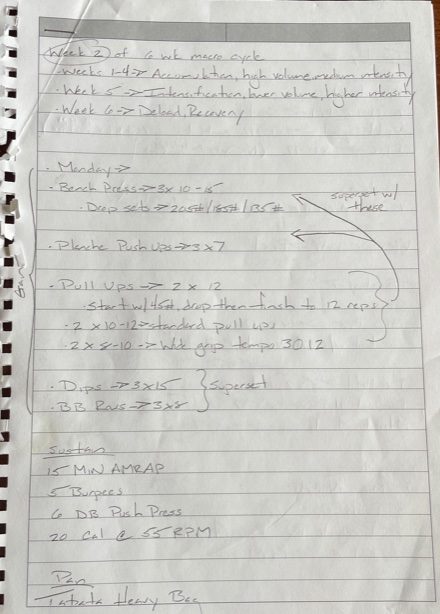
benefits of using pencil & Paper to track your workouts
1. Simplicity – It’s easy.
2. Flexible – It’s easy to adjust on the fly with a pencil and paper. If I tweak something and have to adjust my workout I can easily do that. Just cross out whatever I was planning on doing and write in what I’ve changed. Easy.
3. Personalized – It’s easy to personalize my workouts this way. When I talked about how I sometimes track how I feel or unique situations that come up during a workout like my kids having me stop to play sports with them, I can easily track all this. Just add a hand-written note in the column and I’m good to go.
4. It makes it feel like a journal – I’ve started hearing a lot over the last few years about the importance of journaling. I’m sure it’s a great practice and something I should do. But I don’t. At least not consistently.
I did journal once for a year. I used The Daily Stoic Journal and it was great. I should do it more but that’s for another day.
So I guess sometimes tracking my workouts can double as a form of journaling for me.
5. It keeps me off my phone – There are a lot of apps that track workouts. I’ll get to more on that later. But I think looking at a phone during a workout is distracting. It’s easy to pick up your phone, start scrolling, and next thing you know the workout has stalled.
Tracking on paper solves that for me.
If I don’t pick up my phone to track anything there’s no risk of being distracted by my phone.
I’m sure many people have the willpower where they could track on their phone and not get distracted by apps. I don’t though. The allure is too strong! So I just remove it altogether.
why i don’t use apps to track workouts
There are a million apps you could use to track your workout. Personally, I’ve never felt like they were the best option for me for a number of reasons.
While I’ve tried many of them, they’ve never been able to replace my good ol’ pencil and paper for a number of reasons.
First, I find the ones I’ve tried inflexible. As I mentioned earlier, if I want to adjust my workout on the fly I can easily do that when I’m using a pencil and paper to track my workout. I just mark through some things, or erase, and write in the adjustment and just like that, I’m done.
I don’t feel like that’s as easy to do with apps.
Second, I find a lot of the apps inflexible to different styles of workouts. They often seem to specialize in one style of exercise whether it’s power lifting, body building, CrossFit, etc.
However, I, and many other folks, tend to do all sorts of styles of workouts. On any given day I may do a CrossFit workout or a power lifting workout, or a bodybuilding-style workout. Sometimes I may just be running sprints and others I may plan to go on a long walk with a weight vest.
The bottom line is, I’m mixing in all different styles of workouts and movements on a weekly basis and using just a pencil/pen and paper to track those workouts makes it much easier to do since I’m not specializing in one particular method and thus needing a tracking app to also specialize in some specific method.
If you are specializing in one style of working out then maybe an app would work for you. There was a time where I was strictly trying to get stronger overall. I was focusing on power lifting. I used an app called strong lifts to track this and it was great!
I loved it!
However, now that I’m back to doing a lot of different styles I’ve gone back to the pencil and paper method to track my workouts.
how i track my workouts
I think of my workouts from a macro and micro point of view.
Macro is the big picture. What I’m trying to accomplish overall.
Do I want to get stronger? Am I looking to get “fitter” from a CrossFit standpoint? Am I wanting to increase my 1 rep max on the snatch and clean and jerk? Do I just want to look better?
These are the macro-level things I’m thinking about. Some might call them mesocycles. To me, it’s just the macro view. Where do I want to be from a “health and fitness” perspective.
The micro is the daily workouts. This is what we are focusing on when determining the daily activities needed to hit those macro-level goals.
These are the daily activities. These are what I’m tracking when I’m discussing, “How to track your workouts.”
Here are the specific steps for how to track your workout:

1. Decide your macro vision.
2. Once a week, I do this on Sunday, write out the daily workouts for the upcoming week that will lead you to your macro vision.
3. During the workout, track your reps, weights, exercises, etc.
Let’s break this down using a real-world example.
Let’s say I’ve decided that I want to increase my overall general fitness. I’m not trying to grow my arms as big as possible or increase my one-rep max deadlift. I am trying to stay as strong as I am now while focusing on my overall conditioning.
The macro focus would be, “increasing overall metabolic conditioning during an 8-week macro cycle while maintaining strength.”
Now it’s Sunday and I sit down to write out the daily workouts, the micro, for the first week of the macro cycle.
At the top of the page I write out the macro focus so I remember what my overall focus is.
Next I write, “MONDAY” and I write out that workout. I’ll do this for all of the days of the week, including any rest days. I’ll write the exercises and the sets I’m doing for each. I’ll often write what weight I’ll be planning to use based off of the progressive overload principle and what weight I had used the previous time I had done that exercise.
This is what we think of when we talk about how to track your workouts.
Next Sunday I’ll do it all over again. I’ll refer to the previous week to help me plan out the current week in regards to the weight I’ll be using and the reps I’ll be shooting for. I’ll also see if there were any notes I had made that might impact my planning for next week’s workouts.
Pretty simple. No need to overcomplicate it.
what to do with your old workout entries
You’ve learned how to track your workouts and more importantly, you’ve tracked some workouts. Now what?
There’s lots of things you can do with your old workout logs but only one thing you have to do.
So what is the one thing you have to do?
REFER TO THEM!
The point of tracking your workouts is to see what you did previously and to try to do more. That’s how you progress. To be able to do that you have to refer back to what you previously did.
What did I do last week? Now let’s plan to do a little more this week. Again, progressive overload.
Simple!
tracking benchmarks
Up until now, when discussing how to track your workouts I’ve been referring to daily workouts. This is what most people are referring to when they talk about tracking workouts.
However, for me, I’ve found that in addition to tracking my daily workouts, tracking benchmarks has also been beneficial for my progress over the years.
First off, what are benchmarks?
Benchmark is defined as, “a standard or point of reference against which things may be compared or assessed.”
In relation to working out, fitness, and health, these are the things that I’ve determined are big-picture measuring points of my progress in these areas. They also give a snapshot of where I currently am in regards to these goals.
For me personally, they consist of things like my bench, squat, and deadlift one-rep maxes. They also include my times on a number of CrossFit workouts like “Fran” and “Helen.” There are also some random things like my max number of burpees I can complete in one minute.
To me, each of these benchmarks represent a measuring stick to my goals.
If my goal is to get stronger, which it always is, I’m going to measure that against some of my more strength-oriented benchmarks. Specifically, my bench, squat and deadlift one-rep max.
I know those numbers because they are benchmarks I’ve tracked. I have them written on a board in my garage.
Every so often I’ll test myself and see if I can lift heavier than those numbers on the board. If I can, great! I’m getting stronger. If not, I either need to mix up my programming or just keep grinding.
When I was in the Marine Corps, despite hating running I knew I had to complete a yearly Physical Fitness Test, known as the PFT, which consisted of a 3 mile run amongst a couple of other things.
Even though I hated running, my 3-mile run time became a benchmark I measured myself against. I knew my best 3-mile time during all of my preparation for the Marines and during my entire time in the Marines. I was always trying to exceed that time and thus create a new personal best and a new measuring stick for myself.
Boy was I happy when I got out of the Marine Corps and could drop this as a benchmark for myself. No more long, slow running for me! Not to say that kind of exercise isn’t beneficial. I’m sure it is! It’s just not something I like to do often.
I track my benchmarks SEPARATELY from my daily workout tracking. I like these benchmarks clearly visible at all times. I use a whiteboard I’ve hung up in my garage so I can see them at all times. And if I ever improve on a benchmark, I can easily make the change to the benchmark white board.
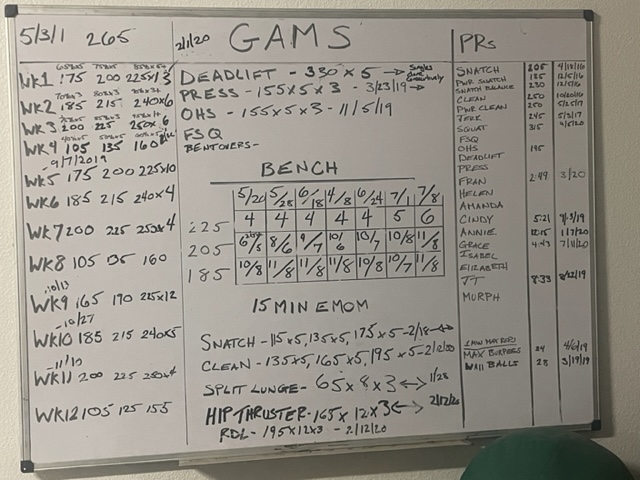
As you can see, there’s no one way to track these benchmarks. I filled out the board in a way that made sense to me.
If I worked out at a gym and didn’t have my own personal whiteboard to track my benchmarks on, I’d probably use the first page of my workout journal to mark these entries. Each time I got a new workout journal I’d rewrite all the benchmark information.
Summary
Getting fit, healthy, and strong is a grind!
It’s rooted in consistency. Day in and day out of doing the same foundational things over, and over, and over.
It’s not always glamorous. It’s not always fun. But it is effective and it’ll enhance your life more than any hack, pill, injection, or supplement will.
An absolutely critical component of making this grind effective is to learn how to track your workouts. It’s a must. Without this step your workouts will be less effective. And if you’re going to spend that effort and grind for months and years at a time, don’t you want the payoff?
Don’t you want to be healthy? Strong? To feel good about yourself in a swimsuit? Don’t you want to set a good example for your kids? Or keep those bones strong and that testosterone high?
Of course you want to do and feel all of these things! I know I do. And that’s why I track my workouts and why I think you should track your workouts too.

